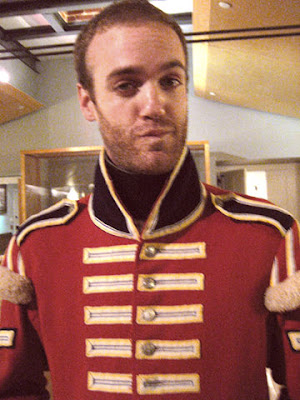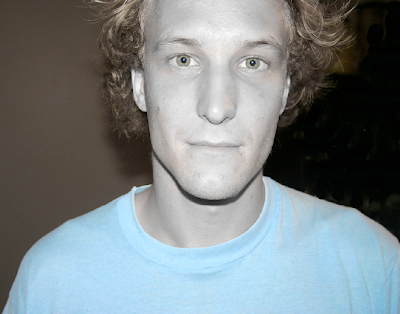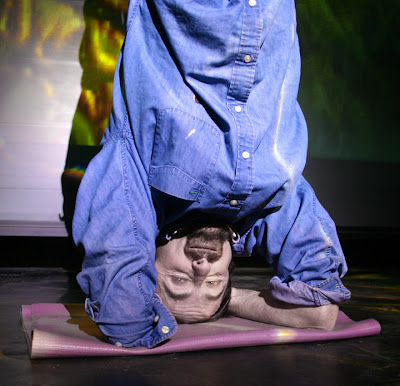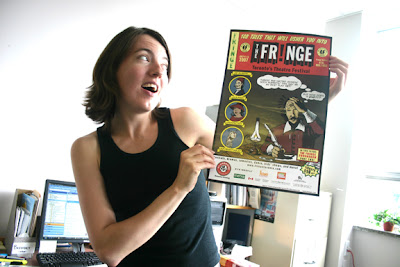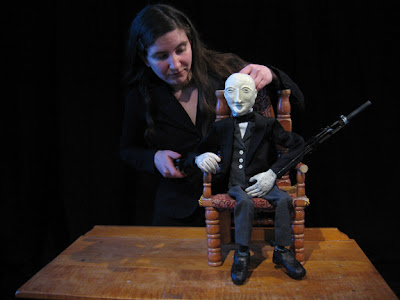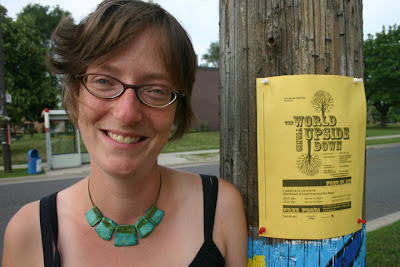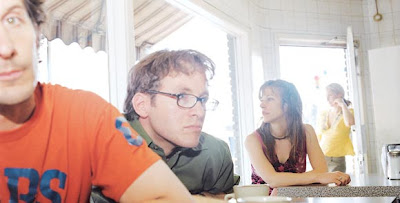 Bluemouth Inc. L-R Stephen O’Connell, Richard Windeyer, Lucy Simic, Sabrina Reeves.
Bluemouth Inc. L-R Stephen O’Connell, Richard Windeyer, Lucy Simic, Sabrina Reeves.Definitely nothing unifying. The performer-spectator relationship is an aspect of our work which is in constant flux. Part Boal, part Grotowski, part spectator sport. We like it up close and intimate. Each location suggests new opportunities for exploring the dynamics between the viewer and participant. I believe the idea is to eventually remove the fourth wall from the equation entirely. Down with the passive viewer!
3) Do you have any unifying theories when it comes to art?
Safe is for suckers.
4) Do you have any unifying theories when it comes to directing a play?
Don’t be late for rehearsal. Less is more.
The critic provides valuable feedback to the artist and guidance to the audience. However it is the artist who creates. As such, the critic works for, and is dependent upon, the artist and not the other way around.
I think it is tragic when artists define themselves by the comments (or lack thereof) of critics. It should be the artist who gets inside the heart and mind of the critic, and not the other way around.
6) Do you have any unifying theories about the artist-producer relationship?
Maybe not a unifying theory but a word of advice: if you find a good producer hang onto them as they are in serious short supply.
 David Tompa (L) and Glen McDonald (R).
David Tompa (L) and Glen McDonald (R).7) Do you have any unifying theories that have come out of your study of the Meisner Technique?
I’ve read a slew of books of actor’s talking about the craft and the only word or concept that appears without fail is “truth”. There are so many approaches to try to achieve truth; Meisner’s just one of them. Unifying theories or comprehensive “systems” are dangerous. No technique can achieve truth if it’s followed to the letter. They’ll give you a jump start or point you in a direction that is potentially good, but it’s such a complex, yet basic thing to achieve truth, that if you try to force a system on it, it’ll disappear.
8) Do you have any unifying theories when it comes to stage management?
I’m more like a jack of all trades (sadly, master of none). It would be a lie to call myself a stage manager. I refuse to do most of that stuff. I think actors are way better at their own blocking notes and presets. Maybe I’m just lazy, but it works for us. Basically, I take care of what needs to be done.
9) Do you have any unifying theories that inform your approach to lighting design, generally?
I can think of some: Don’t be afraid to try new things, always take risks. Don’t try to to cut corners. Always do what’s good for the show, remember that your design is just one element in the big picture. Try to remain practical, don’t fall in love with your own work. Trust your instincts. Be very, very organized and do your homework.
I always try to light theatre like I light dance, I use very little front light, and as much side and back light as possible. Low side light (shin busters) and diagonal backs are my favorite lighting positions. I like bold choices with colour and patterns, while maintaining a certain subtlety. I try to do precise lighting so I use a lot of specials and usually have a lot of cues. Having said all that – simplicity is a real key and very often less is more.
10) Do you have any unifying theories about the relationship between community and theatre?
Hhhmmm. Be playful, adaptable, and try not to be precious about the work (while at the same time never dumbing it down out of some idea that a mixed, non-theatrical audience can’t grasp subtle or difficult material). To try and create within a community, I think you need to let certain aspects of the work go, and realize that where you are will impinge on the process. And make that a positive thing – to welcome children and crazy people and bikers and dogs as interesting parts of the puzzle, rather than distractions (sometimes easier to preach than practice).
Not sure if that’s a unifying theory. The two things help and feed one another, and need lots of humour and silliness.

